International Organization for standardization (ISO) is an independent, non-governmental, international organization that develops standards to ensure the quality, safety, and efficiency of products, services, and systems. The purpose of the ISO 527-2 Test Standard is to design to make products and services better and to make companies, governments and other organizations more efficient. Some of ISO standards are design for specific industries, like the food industry, or design to help improve the environment.
ISO 527-2 Test standard
Description For ISO 527-2
As you know, ISO- 527 is the test standard for the tensile test of plastics composites. This ISO is divided into several parts, namely:
- ISO 527-1: Tensile Test of Plastics Composites
- ISO 527-2: Tensile Test of Molding and Extrusion Plastics
- ISO 527-3: Tensile Test of Plastic Thin Film Sheet
- ISO 527-4: Tensile Test of Plastic Composites & Thin Film Sheet
- ISO 527-5: Tensile Test of Unidirectional fibre-reinforced Plastic Composites
For this article, it will be more focus on ISO 527-2. ISO 527-2 is commonly an international test standard designed for determining the tensile properties of reinforced and non-reinforced plastics. ISO 527-2 is suitable for use on materials such as rigid and semi-rigid thermoplastics moulding, extrusion and cast materials, including compounds filled and reinforced. Manufacturing industries such as automotive, packing and plastics industry often use this standard.
Nowadays, ISO standards are highly preferred by both corporate or government bodies. In Malaysia, most industries use the ISO 527-2 standard in their companies. The Malaysian government has also adopt this standard.
Generally, ISO 527-2 test standard measures the force require to pull a test specimen to its breaking point, several material properties can be determined. ISO 527-2 test method is design to produce tensile property data and specification of plastic materials. This data is useful for qualitative characterization and for research and development. Tensile strength tests can be perform on using Universal Testing Machine (UTM) and also known as a tensile testing machine. The following are the properties of tensile commonly measured through ISO 527-2:
- Tensile strength: the amount of force that can be applied to a material before it breaks
- Tensile modulus: gradient of the curve in the stress-strain diagram
- Elongation: the increase in gauge length after break
- Yield point: stress and strain at the curve plot point at which the gradient is zero
Specimens For ISO 527-2
To perform these tensile tests, the “dumbbell-shaped” test specimens is used in this test. The specimen is placed on the grip of a universal testing machine and the test is started. Tension rate and speed rate is constant until the specimen is break (rupture).
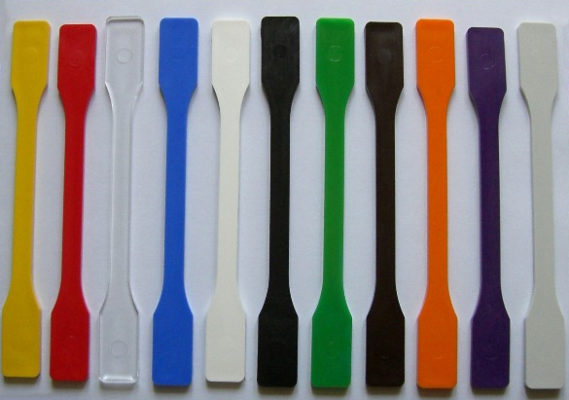
Grips For ISO 527-2
1. Eccentric Roller Grip
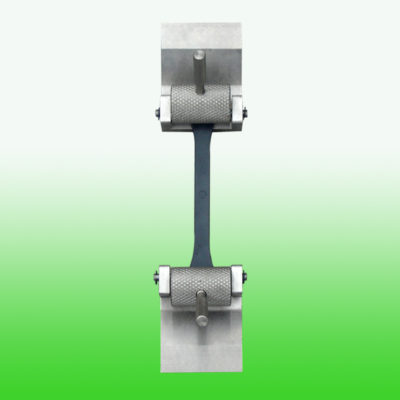
Easy to use and self-tightening applicable for soft and flexible samples, foils, plastics, rubber, etc.
2. Spring Loaded Wedge Grip (Side Lift)
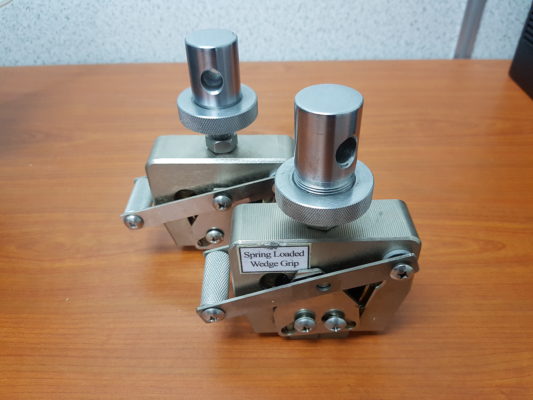
Spring operated, easy and fast operating of the jaw. Suitable for plastic and rubber material
3. Pneumatic Grip
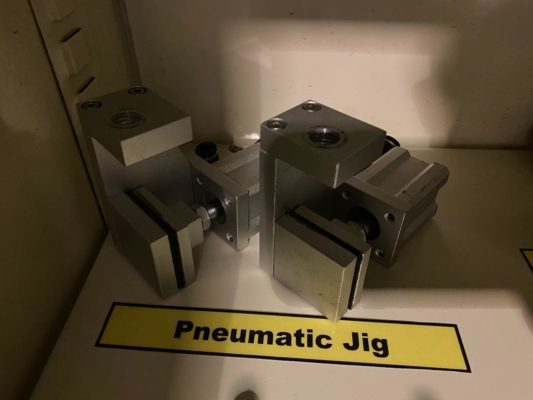
Pneumatic grips are particularly useful when a variety of materials. The gripping force is generated by pneumatic cylinders acting directly on the jaws or via a lever system.
Extensometers For ISO 527-2
The extensometer is used to measure specimen parameters. When performing a tensile test on plastic materials it requires a high-accuracy device to measure the deformation of plastic materials. In plastic usually contains a linear elastic region and a non-linear plastic region. Modulus needs to be measured within the linear-elastic portion, where very little strain exists. That why the extensometers are important to use for this test. It is also used to determine stress, strain, tensile modulus and Poisson’s ratio. Extensometers with high accuracy typically have limited travel and must be removed after the specimen yields or before the specimen breaks. Below is a type of extensometer that can be used when performing tensile tests on plastic materials.
1. Electronic extensometer
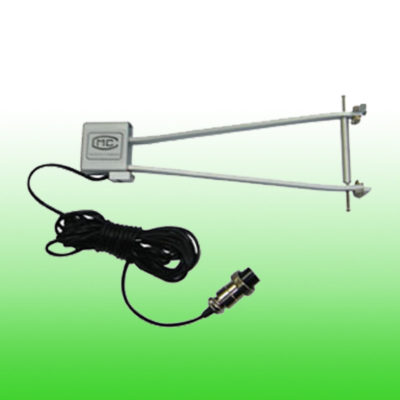
Type of UTM machine
We recommend to use UTM machines with a capacity of 5kN-100kN, it depends on the strength of the materials. We also recommend using a dual-column floor type machine.
1. VEW 2308
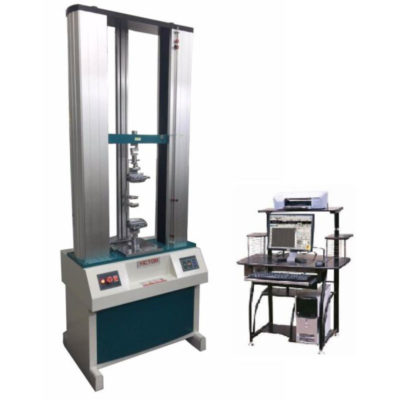
The machine is designed by mechanical-electrical integration, the composition of the force-measuring Sensor, transmitter, microprocessor, mechanism of load drive, computer and color inkjet printer. The high-precision electronic motor can be set to five-speed, the components are connected by plug-way, Floor-standing models, it is taken account of modern industrial design and ergonomics in modelling and Coating. It can be tested with all the materials in the stretch, compression, bending, shear, embedded relay, Peeling. tearing, crack, etc, such as rubber, plastics, leather, metal, nylon wire, fabric, paper, aerospace, packaging, construction, petrochemical, electrical, vehicle, etc.
The implementation of standards and standard configuration:
- GB/T4689.20-1996 Measuring fastness of leather’s adhesion
- QB/T2710-2005 Measuring leather’s expansion and the rate of elongation
- QB/T2711-2005 measuring tear force of leather
- QB/T2712-2005 measuring leather’s strength and stretch of spherical crack test
2. VEW 2302 Series
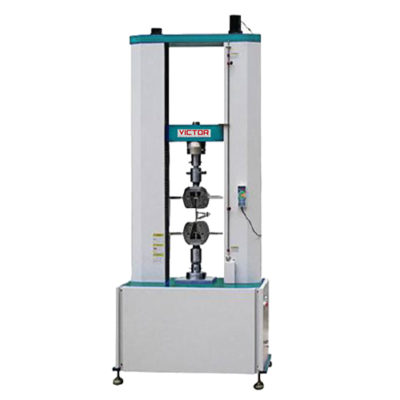
VEW 2302 Computer Servo Type Universal Testing Machine is a new material testing machine that combined with the electronic technology and mechanical transmission, it has accurate load speed, range of force measurement, has high accuracy and sensitivity for the load, displacement measurement and control, it also can be tested the constant-velocity loading, constant- velocity displacement. This machine is simple to operate, especially suitable for controlling quality in production line, this series of machine is mainly applied to test the non-metallic and metallic materials which the load is less than 30ton.
Main Function:
- Mainly applied to test the metallic and non-metallic materials in tension, compression, bending, shear, peel, tear or two-points extensions and others.
- Can be used for materials such as rubber, plastic, wire and cable, optical fiber and cable, safe belt, leather belt composite materials, plastic profiles, waterproof membrane, steel, copper, profiles, spring steel, bearing steel, stainless steel (as well as other high-hardness steel), castings, plate, strip, non-ferrous metal wire.
Test Procedure
- Prepare the specimens as described in the method (Cut your material into a “dumbbell” shaped specimen).
- Place the specimen into grips.
- Clamp specimen at the top of the grip first then carefully clamp the sample into the bottom grip
- Attach the extensometer to the specimen
- Zero all the testing machine before starting the test
- Begin the test by Click start button on the software
- End the test after sample break (rupture)
There are different styles of grips available for different brands of equipment, but the concept is basically the same.
